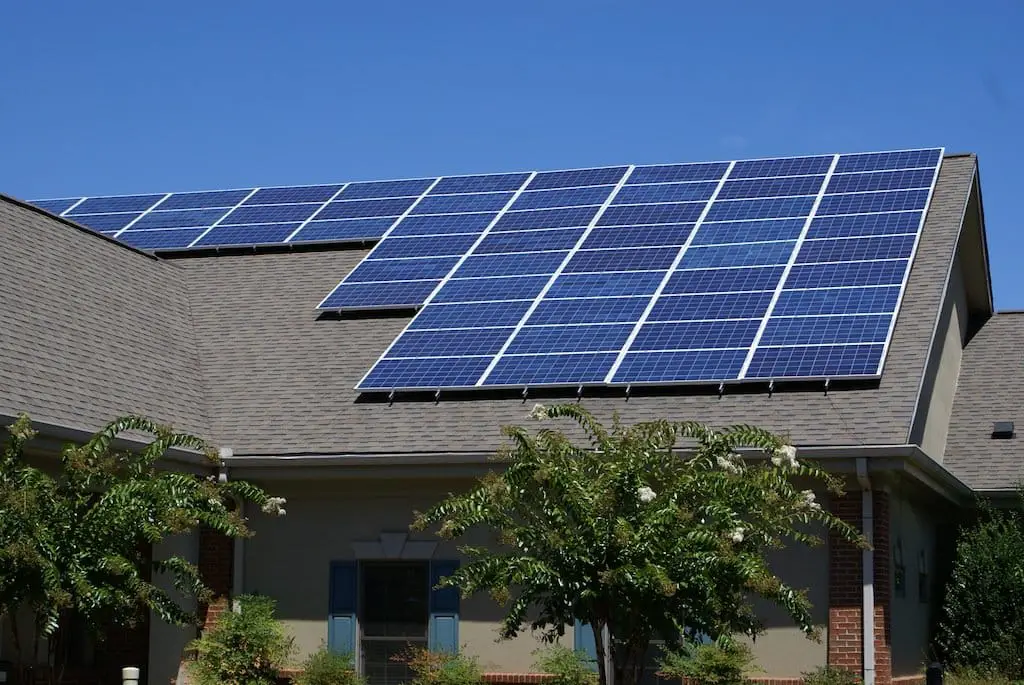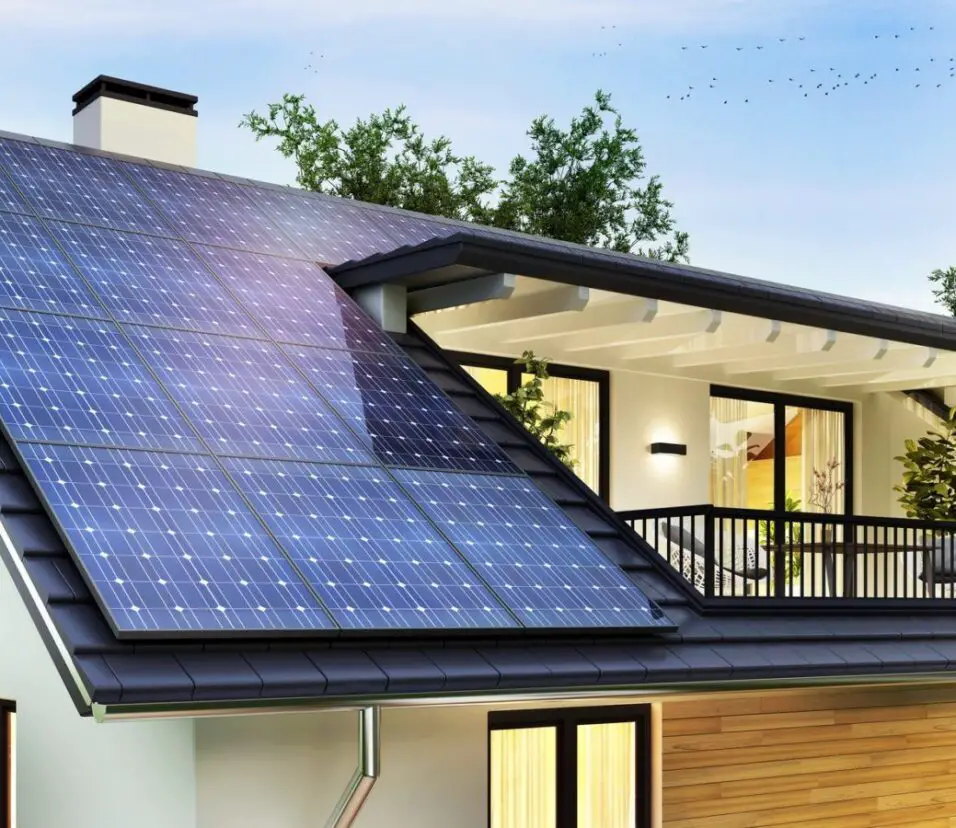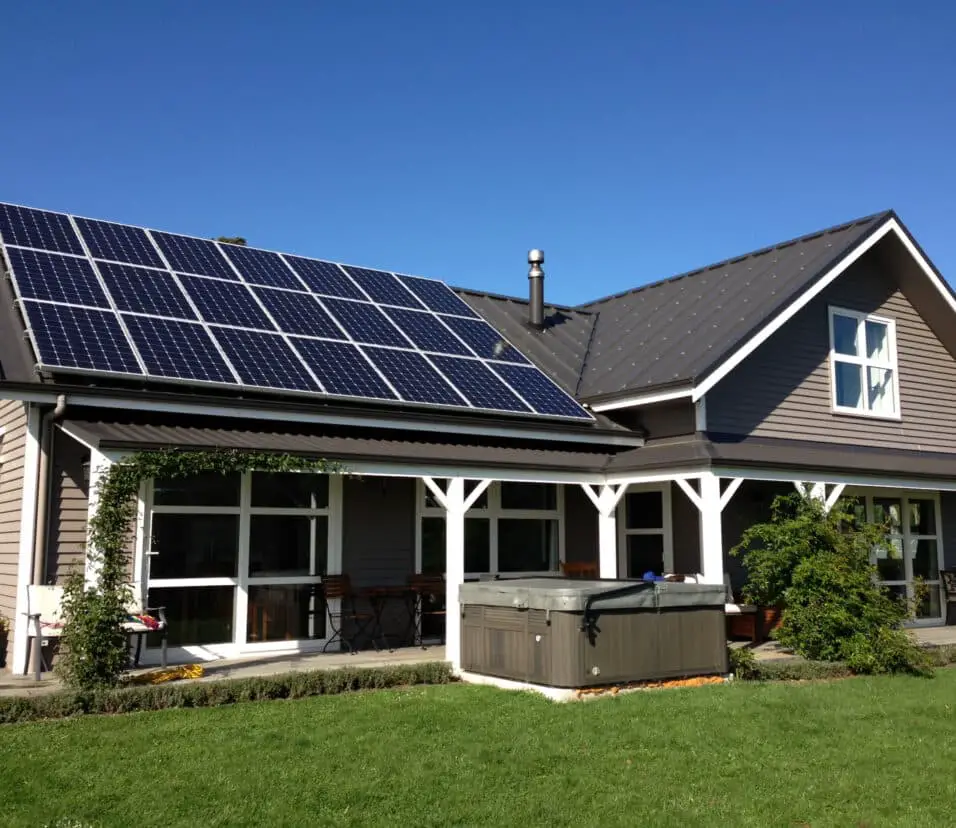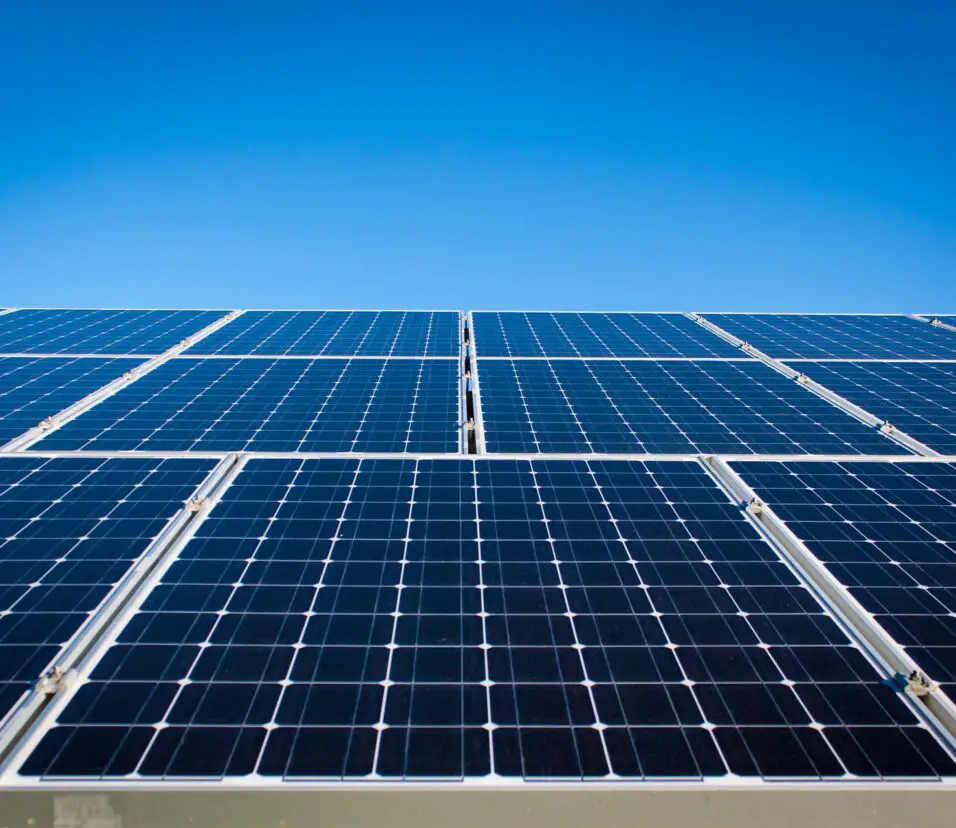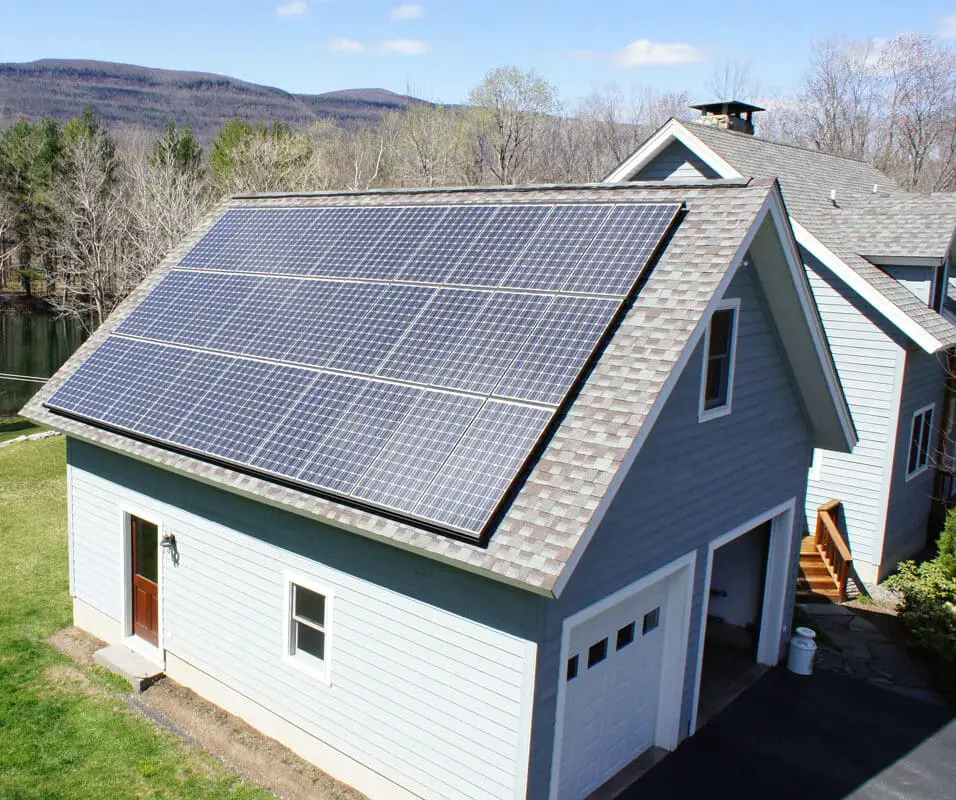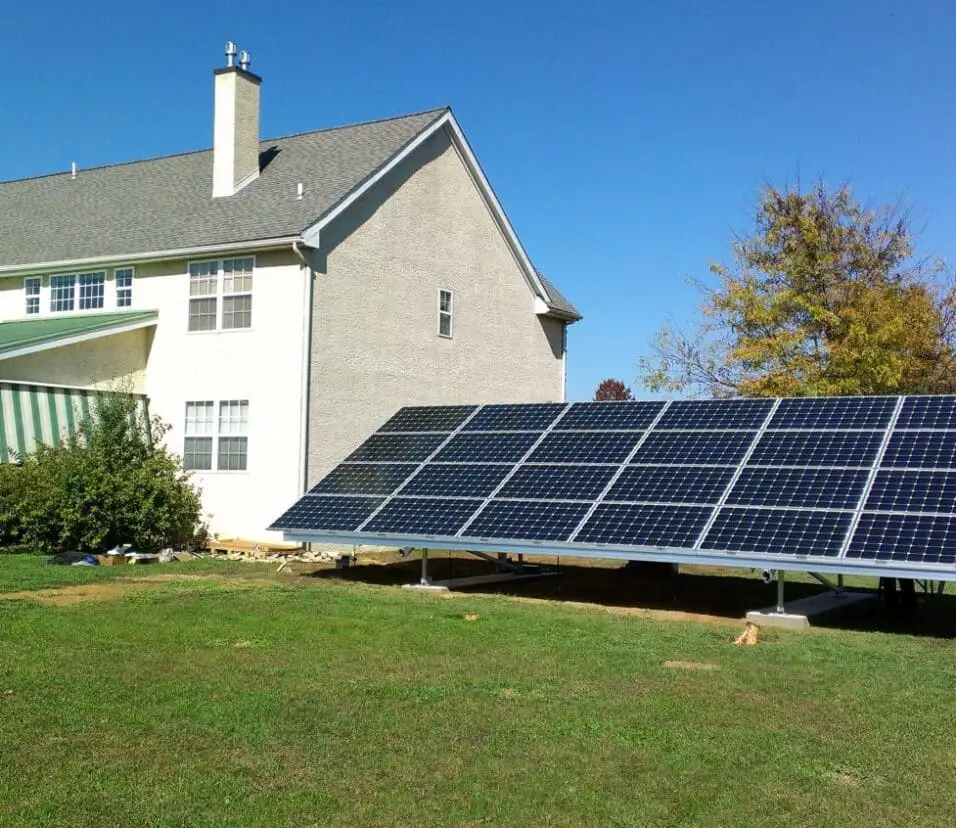Can Solar Panels Power An Entire House
Introduction
Can Solar Panels Power An Entire House: Solar panels, composed of photovoltaic cells, possess the remarkable ability to convert sunlight into electrical energy through the photovoltaic effect. This technology has witnessed remarkable advancements over the years, leading to increased efficiency, reduced costs, and enhanced durability. These developments have brought solar power closer to being a viable alternative to conventional grid electricity.
Is it truly feasible to generate enough electricity to meet the demands of an Can energy storage solutions. Solar panels, which convert sunlight into electricity, have become a symbol of clean, efficient, and cost-effective energy generation. One intriguing question that arises amidst this renewable revolution is whether solar panels have the capability to power an entire house. As we delve into the intricacies of solar technology and its potential applications, we’ll explore the factors that influence the feasibility of solar panels as a primary energy source for residential properties.
As we embark on this exploration, we will dissect the mechanics behind solar energy conversion, investigate the factors that influence a solar panel’s ability to supply electricity to an entire house, and analyze the benefits and limitations of such a system. Moreover, we will delve into the concept of net metering, the integration of energy storage systems, and the role of government incentives in making solar power an economically viable and environmentally responsible choice for residential energy needs.
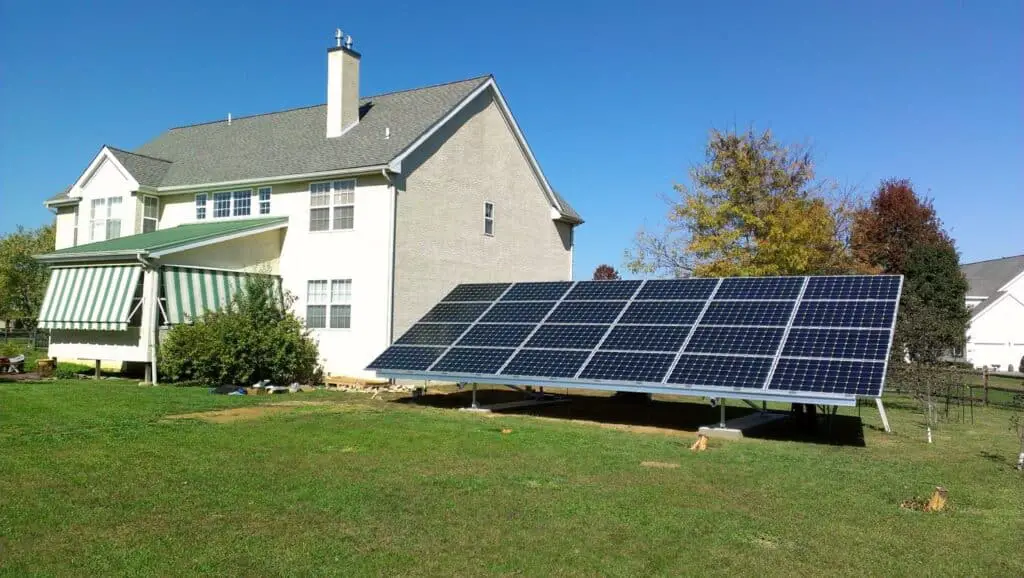
Can my house run entirely on solar power?
The sun’s energy is renewable and copious, making solar power a promising electricity source. Solar panels use photovoltaic cells to turn sunlight into energy. Solar panels are more efficient, durable, and economical as technology progresses, making them appealing to households seeking sustainable energy.
Your energy needs must be assessed to determine if your house can function on solar power. Conduct an energy audit to determine your average electricity use. Energy demand is affected by housing size, tenant count, energy-intensive appliances, and heating/cooling systems.
Sunlight is crucial to the feasibility of a solar-powered dwelling. Solar energy production increases in sunny areas, making it easier to meet your electrical needs. With proper system sizing and energy storage, solar systems can be profitable in less sunny places.
Calculate your home’s solar panel capacity based on energy needs and solar potential. The average daily solar hours, panel efficiency, and energy independence must be considered. A solar expert can design a system that matches your needs.
How many solar panels does it take to fully power a house?
An average-sized home in the United States (2,480 square feet) will need about 15 to 22 full-sized solar panels to completely replace traditional energy sources. That being said, the exact number of solar panels needed for your house depends on several other factors.
To estimate the number of solar panels needed, start by evaluating your home’s energy consumption. Analyze past electricity bills and identify your average daily and monthly energy usage. Consider energy-intensive appliances, heating, cooling, lighting, and other electricity-consuming devices that contribute to your overall energy demand.
Understanding Solar Panel Output
Solar panel output is typically measured in watts (W) or kilowatts (kW). Panel efficiency, which indicates how much sunlight a panel can convert into electricity, varies among different manufacturers and models. As technology advances, higher efficiency panels become more accessible, allowing for greater energy production from a given surface area.
Sunlight Availability and Location
The amount of sunlight your location receives significantly impacts the efficiency of your solar panels. Regions with abundant sunshine generally require fewer panels to meet energy needs, while areas with less sunlight may require larger systems for sufficient power generation.
System Sizing and Energy Goals
To fully power a house with solar energy, homeowners must decide whether they want complete energy independence or a hybrid system with grid connectivity. If you aim for complete self-sufficiency, you will need a system capable of generating enough electricity to meet all your needs, even during periods of low sunlight or inclement weather.
Can solar panels work at night?
The short answer is: no, solar energy systems only operate during the day. This is because the power from the sun is key to how a solar panel turns light into electricity.
Solar panels generate electricity through the photovoltaic effect. When sunlight strikes the photovoltaic cells within the panels, they release electrons, creating an electric current. This direct conversion of sunlight into electrical energy is what makes solar panels a valuable renewable energy resource.
Solar panels are dependent on sunlight for electricity generation. As the sun sets, its rays are no longer available to stimulate the photovoltaic cells, causing solar panel output to decline rapidly. Consequently, solar panels cannot produce electricity in the absence of sunlight.
While solar panels cannot generate electricity at night, the concept of net metering allows homeowners with solar systems to address this limitation. During the day, when solar panels produce more electricity than the household consumes, the surplus energy is fed back into the grid. Utility companies credit homeowners for this excess electricity. These credits are then used to offset the electricity consumption from the grid during nighttime or low solar production periods.
Energy storage is the key to ensuring a continuous power supply from solar panels even at night. By storing the excess electricity generated during sunny hours, homeowners can tap into this stored energy to meet their electricity needs during periods of low or no solar production. This is achieved through battery storage systems.
Batteries play a crucial role in making solar energy available 24/7. During the day, when solar panels produce more electricity than is immediately consumed, the surplus is stored in batteries for later use. Once the sun sets, these batteries release the stored energy, providing a reliable power source during the night.
How long do solar panels last?
25 to 30 years
The industry standard for most solar panels’ lifespans is 25 to 30 years. Most reputable manufacturers offer production warranties for 25 years or more. The average break even point for solar panel energy savings occurs six to 10 years after installation.
Solar panels consist of photovoltaic cells, which convert sunlight into electrical energy through the photovoltaic effect. These cells are encased in a protective layer, typically made of tempered glass, to shield them from external elements. The entire panel is framed with aluminum and equipped with a junction box for electrical connections.
On average, most solar panels come with a warranty ranging from 20 to 25 years. This warranty generally guarantees that the panels will retain a specific level of efficiency (e.g., 80% or more) after the designated period. However, this doesn’t mean that solar panels stop working after the warranty expires.
In reality, solar panels can continue to produce electricity well beyond their warranty period. Many panels can last 30 years or more with proper care and maintenance. It’s not uncommon for older solar panels to continue functioning at 80% or more of their original efficiency.
PID occurs when a voltage difference between the solar cells and the frame causes a drop in panel efficiency. PID can be mitigated by using PID-resistant modules or implementing appropriate system grounding.
Initially, solar cells may experience a slight drop in efficiency upon exposure to sunlight. This condition stabilizes over time and should not be confused with long-term efficiency loss.
Do solar panels work on cloudy days?
A common myth: solar panels don’t work at night or when it’s cloudy. Solar panels technically still function at night, but they won’t be generating electricity. However, they will still produce electricity during cloudy weather.
Before delving into their performance on cloudy days, let’s understand how solar panels function. Solar panels are composed of photovoltaic cells, typically made from silicon, that absorb photons from sunlight. These photons knock electrons loose, generating a flow of electricity known as a direct current (DC). An inverter then converts this DC into alternating current (AC), suitable for powering homes and businesses.
The efficiency of solar panels is directly linked to the intensity of sunlight they receive. On bright, sunny days, solar panels operate at their maximum potential as they receive a higher concentration of photons, leading to more electricity production. However, when clouds obstruct the sun’s rays, the amount of light reaching the solar panels decreases, affecting their performance.
Contrary to popular belief, solar panels do work on cloudy days. While their efficiency might decrease, they can still generate electricity to some extent. The degree to which they can do so depends on various factors, such as the type and quality of solar panels, the density of cloud cover, and the panel’s tilt and orientation.
Cloud cover can significantly impact the amount of sunlight reaching the solar panels. Heavy clouds that completely block the sun can reduce electricity production by 50% to 80% compared to a sunny day. However, even during partly cloudy conditions, solar panels can still generate around 25% to 50% of their maximum capacity.

Do solar panels work in winter?
Even in below-freezing weather, solar panels turn sunlight into electricity. That’s because solar panels absorb energy from our sun’s abundant light, not the sun’s heat. In fact, cold climates are actually optimal for solar panel efficiency.
Before delving into their performance on cloudy days, let’s understand how solar panels function. Solar panels are composed of photovoltaic cells, typically made from silicon, that absorb photons from sunlight. These photons knock electrons loose, generating a flow of electricity known as a direct current (DC). An inverter then converts this DC into alternating current (AC), suitable for powering homes and businesses.
The efficiency of solar panels is directly linked to the intensity of sunlight they receive. On bright, sunny days, solar panels operate at their maximum potential as they receive a higher concentration of photons, leading to more electricity production. However, when clouds obstruct the sun’s rays, the amount of light reaching the solar panels decreases, affecting their performance.
Contrary to popular belief, solar panels do work on cloudy days. While their efficiency might decrease, they can still generate electricity to some extent. The degree to which they can do so depends on various factors, such as the type and quality of solar panels, the density of cloud cover, and the panel’s tilt and orientation.
Cloud cover can significantly impact the amount of sunlight reaching the solar panels. Heavy clouds that completely block the sun can reduce electricity production by 50% to 80% compared to a sunny day. However, even during partly cloudy conditions, solar panels can still generate around 25% to 50% of their maximum capacity.
Can moonlight power solar panels?
Can the moon power solar panels? Well, the short answer is mostly no. Solar panels require 1,450 watt-hours for an efficient charge cycle, and the sun supplies 1,368 watts per square meter. In contrast, the moon supplies approximately 2.3 million times less energy than sunlight radiation.
Contrary to popular belief, cold temperatures have a minimal impact on solar panel efficiency. In fact, solar panels are more efficient in cooler weather than in scorching heat.
High temperatures can cause photovoltaic cells to experience a decrease in performance, leading to a slight drop in electricity production. On the other hand, the conductivity of the materials within solar panels improves in colder conditions, resulting in a more efficient electron flow and higher overall efficiency.
One concern in winter is the reduced duration of daylight, as the days are shorter. While this does affect solar energy production, it is a seasonal phenomenon and not an issue unique to solar panels. Despite shorter days, solar panels can still generate sufficient electricity to power residential and commercial properties during winter.
In winter, the sun’s angle is lower in the sky, leading some to believe that solar panels won’t receive enough sunlight. However, modern solar panel installations are designed with an optimal tilt and angle for the geographic location, ensuring they capture sunlight effectively throughout the year.
Additionally, snow can slide off solar panels more easily due to the lower tilt angle, preventing excessive snow accumulation that could obstruct sunlight.
As the winter season unfolds, many individuals question the viability of solar panels during the colder months. The misconception that solar panels don’t work in winter lingers, but in reality, these photovoltaic marvels continue to harness the sun’s energy even in chilly weather.
Do solar panels weaken over time?
The adoption of solar energy has significantly increased over the years, with solar panels becoming a popular choice for renewable energy generation. As more individuals and businesses embrace solar power, delve into the factors that influence the degradation of solar panels and explore their expected lifespan.
Like any other technology, solar panels are subject to degradation over time due to various factors. The primary reason for this degradation is prolonged exposure to environmental conditions, including sunlight, temperature fluctuations, humidity, and weather events. While solar panels are designed to withstand these factors, some degree of performance decline is inevitable.
Temporary Efficiency Drop: Solar Panel “Initial Light-Induced Degradation”
This phenomenon occurs in the first few hours or days after a solar panel is first exposed to sunlight. During this period, the efficiency of the solar panel drops due to the initial interaction of the silicon with sunlight. Fortunately, this type of degradation is temporary, and the efficiency of the solar panel stabilizes after this initial phase.
PID is a long-term degradation that affects solar panels installed in high-voltage systems, such as large-scale solar farms. It is caused by potential differences between the solar cells and the grounded frame of the panel, leading to performance losses over time.
The quality of the materials used in manufacturing the solar panel plays a significant role in its longevity. High-quality panels are likely to have better protection against degradation factors.
The average lifespan of solar panels typically ranges from 25 to 30 years. Most solar panel manufacturers offer performance warranties guaranteeing that their panels will still produce a certain percentage of their original output after 25 years.

Conclusion
The capacity of solar panels to supply a house’s electricity hinges on their efficiency, which has significantly improved over time. However, the total energy output is influenced by geographical location, weather patterns, and the angle and orientation of the solar panels. While sun-rich regions typically offer better solar potential, advancements in solar tracking systems can enhance energy generation even in less sunny areas.
Energy storage solutions play a crucial role in bridging the gap between solar energy generation during the day and consumption at night. The integration of battery storage systems can store excess energy for later use, ensuring a continuous power supply and whole house reducing reliance on the traditional grid during non-sunny periods. Tax credits, rebates, and net metering arrangements can make solar installations more financially attractive and accelerate the adoption of solar energy on a broader scale.
While solar panels can offset a substantial portion of a household’s electricity needs, achieving complete energy independence requires careful consideration of energy consumption habits. Implementing energy-efficient appliances, adopting smart home technologies, and optimizing power usage can significantly impact a home’s overall energy demand, making it easier for solar panels to meet those needs. Government incentives and policies supporting renewable energy can also play a significant role in encouraging homeowners to invest in solar power systems.



